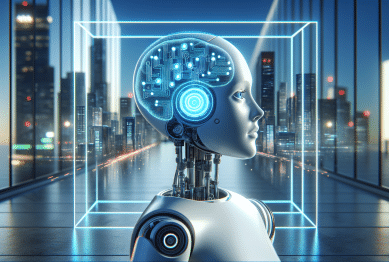Quantum computing is becoming a game-changer for science and technology. This guide explores what quantum computers really are, how quantum algorithms work, and how industries from cybersecurity to healthcare may be transformed. Get ready to discover how quantum technology might reshape what’s possible.
The Basics of Quantum Computing
Quantum computing stands apart as a Bold new frontier in information processing. Unlike conventional computers, which rely on bits that are either zero or one, quantum computers use quantum bits—or qubits—that can exist in multiple states at the same time. This superposition property gives quantum computers a powerful edge in solving certain problems that are nearly impossible for classical computers. It’s a concept that still feels futuristic to many, but it’s rapidly taking shape in today’s research labs.
The fascinating aspect of quantum computing hinges on entanglement and superposition. Entanglement links two qubits so tightly that the state of one instantly influences the other, even across large distances. This means quantum systems can process a massive number of possible solutions simultaneously. The result? Quantum computers could one day solve high-complexity problems, such as factoring large numbers or simulating molecules, with speed and efficiency previously considered unimaginable.
Grasping this technology means shifting how people think about computation. Qubits aren’t just faster—they’re fundamentally different. They introduce probability and uncertainty in computational outcomes, creating both challenges and breakthroughs for programmers designing new algorithms. Understanding the basics is a first step toward seeing why experts are so energized by quantum’s potential to unlock new discoveries and change technology as we know it.
Quantum Algorithms and Why They Matter
Algorithms guide computers in solving particular problems, and quantum algorithms are specifically engineered to exploit qubit capabilities. One of the most famous is Shor’s algorithm, which theoretically allows factoring of extremely large numbers far faster than classical methods can manage. This single algorithm, if implemented on a large-scale quantum computer, could break much of today’s encryption—making quantum cryptography a topic of intense study. Other quantum algorithms, such as Grover’s search, pave the way for dramatic increases in speed for searching unsorted databases, offering advantages in everything from logistics to artificial intelligence.
It’s the structure of these algorithms that sets them apart. Quantum algorithms use interference and entanglement to reach solutions with significantly fewer steps than their classical counterparts. This means fields like drug discovery, optimization, and machine learning could all gain new capabilities. To fully benefit, researchers are also developing hybrid algorithms that blend quantum speed with classical reliability, letting both paradigms work together efficiently.
One of the great challenges now is scaling quantum hardware so these algorithms can tackle real-world tasks. Today, most quantum systems are small and prone to error. However, as researchers refine qubit stability and error correction, the practical use of quantum algorithms gets closer. Progress remains fast, with several companies and labs racing to build bigger, more accurate quantum computers that can put these advanced algorithms to work.
Transforming Cybersecurity With Quantum Computers
Cybersecurity stands to change dramatically as quantum computing matures. That’s because modern encryption—especially public-key cryptography—relies on mathematical problems believed to be hard for classical computers but are solvable for quantum machines. Once quantum computers reach a critical level of capability, they could decrypt data that’s currently considered secure. This vulnerability is driving a surge of research and investment into ‘post-quantum’ encryption, which is designed to withstand quantum attacks.
Quantum cryptography also offers new tools for security. For example, quantum key distribution (QKD) uses the laws of quantum physics to create unbreakable encryption keys. The mere act of intercepting a quantum key alters its state, alerting both parties to potential eavesdropping. Several governments and startups are already testing small-scale quantum networks using QKD to protect data during transmission.
Real-world deployment of quantum-safe systems is still unfolding, but awareness is spreading quickly in risk-sensitive industries. Financial services firms, governments, health systems, and critical infrastructure organizations are all exploring how to future-proof against quantum threats. As standards emerge and technology advances, security strategies are likely to blend classical protections with innovative quantum techniques for a robust digital future.
Quantum Computing’s Impact on Healthcare and Science
The healthcare sector may see especially profound benefits from quantum computing. One key area is drug discovery, where simulating how complex molecules interact normally takes supercomputers months—or even years—of calculation. Quantum computers, leveraging the parallel power of qubits, can potentially model these interactions much faster, speeding up the discovery of new therapies.
Quantum-enhanced imaging and diagnostics also represent a big step forward. Techniques like quantum sensing could allow doctors to observe cellular or even atomic structures, revealing details traditional imaging cannot. This means earlier, more accurate detection for diseases and more effective treatment options. Excitement is building in both public and private sectors as healthcare innovation links with quantum research.
Beyond medicine, quantum computing is expected to play a critical role in materials science, climate research, and energy optimization. Modeling chemical reactions, predicting weather patterns, and improving battery technologies are just a few areas where quantum’s speed can accelerate discovery. It’s an evolving ecosystem fueled by partnerships between universities, research centers, and tech enterprises.
Challenges Facing Quantum Technology Adoption
Despite its promise, quantum computing faces big hurdles before achieving mainstream use. The most urgent is error correction. Qubits are delicate and easily disturbed by noise from their environment, leading to computation mistakes. Building reliable, error-resistant quantum machines is complex and costly—requiring advanced cooling systems and significant engineering breakthroughs. These challenges keep large-scale, fault-tolerant quantum computers out of reach for now.
Another roadblock is building a skilled workforce. Quantum programming is unlike classical computer coding, requiring knowledge of quantum mechanics and advanced mathematics. As interest grows, universities and companies are launching training programs, but demand still outpaces available talent. Investment in education and workforce development is a top priority for long-term growth in this field.
Access is also a challenge. Most quantum computers today reside in university or corporate labs and are accessed through the cloud. Open-source quantum software platforms are helping to democratize access, but hardware remains scarce. Widespread adoption will depend on technological breakthroughs, cost reductions, and a growing ecosystem of partners working together to turn potential into reality.
Quantum Computing in Everyday Life—What the Future Holds
It might sound distant, but the impact of quantum computing could ripple into daily life sooner than expected. For instance, secure data transmission through quantum networks could protect personal banking, healthcare records, and smart devices. Artificial intelligence powered by quantum processors might unlock smarter recommendations, medical diagnostics, or even breakthroughs in clean energy.
Businesses, scientists, and governments are getting ready for the age of quantum advantage. Some are already experimenting with early-stage quantum cloud services for tasks like portfolio optimization, logistics planning, or gene sequencing. While mainstream user access is likely still years away, the foundational steps are being laid down now.
As this technology evolves, new applications and ethical questions will arise. Policy decisions, data privacy protections, and responsible innovation must be part of the conversation. By staying informed and curious, society will be better positioned to seize the opportunities and manage the challenges of a quantum-powered world.
References
1. National Academies of Sciences, Engineering, and Medicine. (2019). Quantum Computing: Progress and Prospects. Retrieved from https://www.nap.edu/catalog/25196/quantum-computing-progress-and-prospects
2. IBM Quantum. (n.d.). What is Quantum Computing? Retrieved from https://www.ibm.com/quantum-computing/learn/what-is-quantum-computing/
3. National Institute of Standards and Technology. (2022). Post-Quantum Cryptography Standardization. Retrieved from https://csrc.nist.gov/projects/post-quantum-cryptography
4. European Space Agency. (n.d.). Quantum Key Distribution. Retrieved from https://www.esa.int/Applications/Telecommunications_Integrated_Applications/Quantum_key_distribution
5. U.S. Department of Energy. (2023). Quantum Computing for Science. Retrieved from https://www.energy.gov/science/quantum-information-science
6. NHS Health Research Authority. (2021). The Future of Healthcare with Quantum Technology. Retrieved from https://www.hra.nhs.uk/planning-and-improving-research/policies-standards-legislation/quantum-computing-healthcare/









